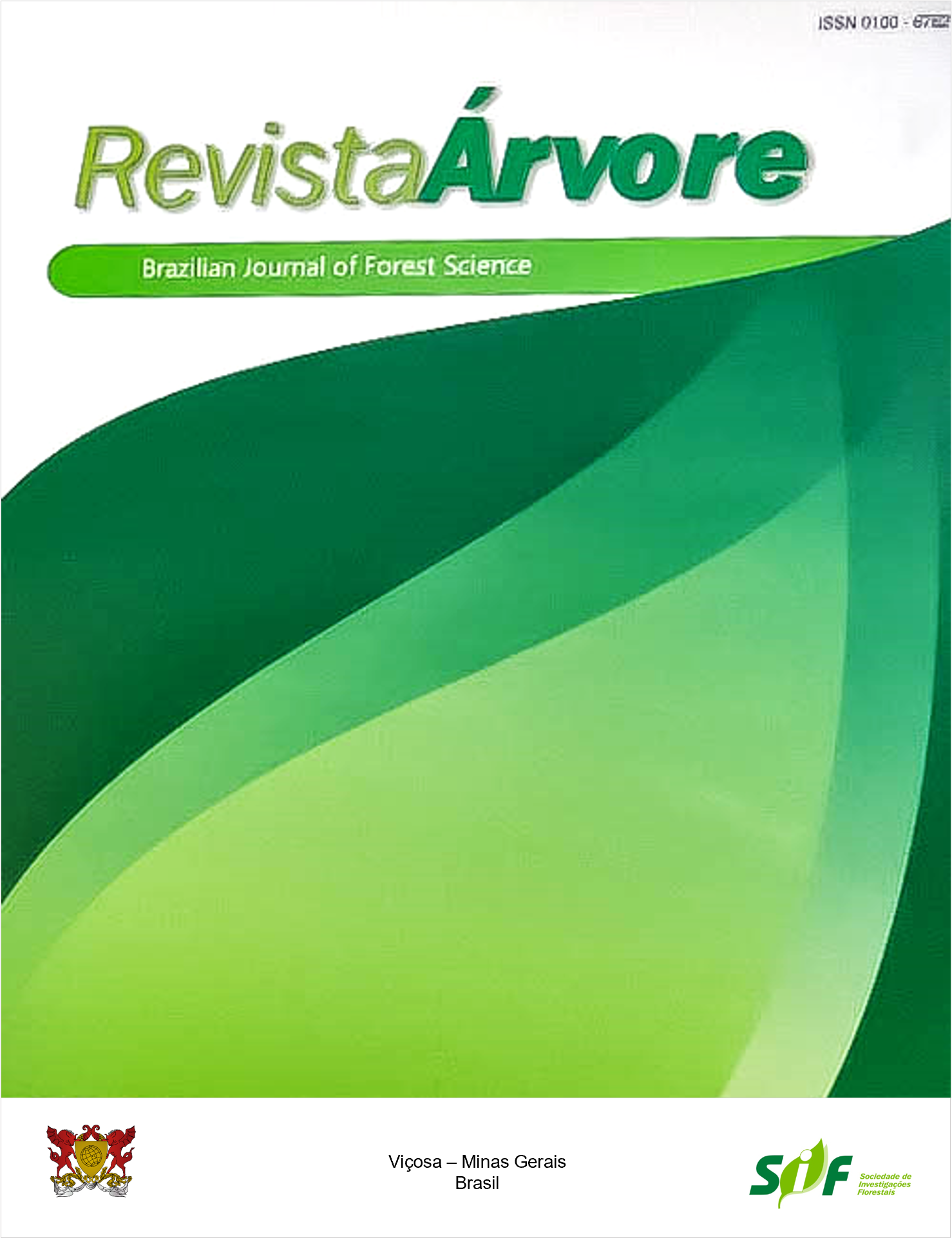SYMBIOTIC EFFICIENCY OF INOCULATION WITH NITROGEN-FIXING BACTERIA AND ARBUSCULAR MYCORRHIZAL FUNGI IN Tachigali vulgaris SEEDLINGS
Keywords:
Symbiosis, Biological nitrogen fixation, Recovery of degraded areasAbstract
The present study aimed to evaluate the effect of inoculation with nitrogen-fixing bacteria (NFB) and arbuscular mycorrhizal fungi (AMF) on the development of Tachigali vulgaris seedlings under nursery conditions. The seedlings were produced in 1 kg bags on a substrate of sand and vermiculite (1:1), following a completely randomized experimental design in a 3 (NFB) x 2 (with and without AMF) factorial scheme with 3 additional control treatments consisting of: seedlings inoculated only with AMF (mycorrhizal control), non-inoculated seedlings fertilized with N (nitrogenized control) and without N (absolute control). The following variables were evaluated: height, stem diameter (SD), shoot dry mass (SDM), root dry mass (RDM) and nodule dry mass (NDM), P accumulation in the shoot, and root mycorrhizal colonization (RMC). Efficiency and effectiveness were calculated to evaluate the plant response to double inoculation. The treatments showed a significant effect for all variables, except for mycorrhizal colonization, nodule number, and dry mass, with the nitrogen treatment having the highest growth values. Plants submitted to double inoculation showed a higher accumulation of dry matter, height and SD, reaching a 124% higher RDM regarding the absolute control, 90% more SDM, and 207% more NDM regarding the seedlings inoculated only with rhizobia. The positive effect of double inoculation occurred regardless of the strain used. The results indicate that the joint inoculation of NFB and AMF was beneficial for the species, promoting its growth.
Keywords: Symbiosis; Biological nitrogen fixation; Recovery of degraded areas
Downloads
Published
How to Cite
Issue
Section
License
Copyright (c) 2021 Revista Árvore

This work is licensed under a Creative Commons Attribution 4.0 International License.
All authors agreed to submit the work to Revista Árvore and granted the exclusive license to publish the article. The authors affirm that it is an original work and has not been previously published elsewhere. The scientific content and opinions expressed in the article are the sole responsibility of the authors and reflect their opinions, not necessarily representing the opinions of the editorial board of Revista Árvore or of the Society of Forest Investigations (SIF).




